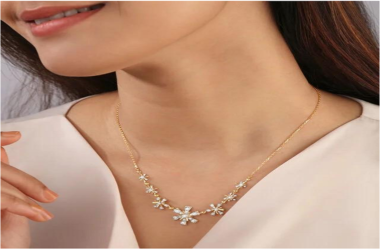INTRODUCTION: PEARLS OF THE SOUTH SEAS
Australian pearl necklace The Southern Seas lie between the southern coast of Southeast Asia and the northern coast of Australia . this region is the natural home of Pinctada maxima , the mollusc used for farming Australian cultured pearls .
Farmers use P. maxima to cultivate pearls in the warm waters of the seas of Australia , Indonesia , the Philippines , the Myannar ( formerly Burma) , and finally those of Thailand .
Australian pearl character
One of the points characterizing its unique properties is the size of its waist . As proof (and this is quite spectacular) , it suffices to compare a stock of South Sea pearls with another of Akoya pearls .
Australian pearls have diameters between 9mm and 20mm (the average being 13mm) . The Akoyas davantages lie between 2 mm and 11 mm (a vec an average of between 6 and 7 mm ) .
Australian pearl growth factors
The cultivation of Australian pearls is possible through the existence of 4 factors:
The size of the oyster producing it > The diameter of the implanted pearl > The external environment > Its gestation period.
AUSTRALIAN PEARL QUALITY
There is no standard of measurement quality for South Sea pearls. In fact, most of the companies that market them use their own qualification standard. The South Sea Pearl Consortium and the South Sea Pearl Trading Association jointly use 5 standard criteria .
Gemperles strictly adopts these 5 standards and adds a 6th, the thickness of mother-of-pearl . We detail these criteria below by noting the corresponding quality score (top GEMME, A, B, C, D)
THE COASTS TO THE NORTH AND NORTH-WEST OF AUSTRALIA
Pearl regions
The coasts to the north and northwest of Australia are also one of the most important pearl regions in the world. In this case, their importance was not due to their transcendence in the history of fishing and the pearl and mother-of-pearl trade, since it is one of the regions most recently incorporated into the exploitation of these resources
The importance of this region stems from the fact that it contains the largest pearl deposits in the world. They stretch over 5,000 km from southwest to northwest Australia. Australian pearl deposits are found in this vast expanse in irregularly distributed groups from Cooktown in the northwest to Fermantale in the southwest.
The Torres Strait fisheries in Queensland and the northwestern fisheries in Western Australia were the most productive. The richest pearl oyster beds in these regions are found around the Aru Islands, near Port Darwin, and in several places between King Sound and the Northwest Cape. The great barrier of coral reefs is also included in this vast and rich pearl region. In fact, in the Great Barrier, one of the three main products exploited has been pearl oysters.
PEARL OYSTER FISHING
The pearl oyster fishery in this region began in 1861 when an American named Tays reported finding very abundant pearl beds in Northwest Australia. To exploit them, he employed the aborigines as divers. In the following years, most of the deposits were discovered by the Japanese fleets. There were several important pearl centers where most of the fishermen registered and got their supplies. The first were Thursday Island and Broome.
The exploitation of Australian pearl deposits began around 1870 and was practiced using diving suits and with fleets made up of many medium-sized boats which carried more or less crews. The product of fishing for mother-of-pearl and Australian pearls, between 1900 and 1910, recorded one of the highest profits in the world.
By gathering information from several authors, we can estimate the total value of the exploitation of Australian mother-of-pearl between 1900 and 1906 at more than 300,000 euros. Pearls, although rare, have achieved exceptional value. One of Australia’s finest pearls was fished in 1917 in the northwest of the country. It weighed 100 grains and was 16mm in diameter. Its value has been estimated at £ 20,000.






